Foreign Language Anxiety in Saudi University Students: A Review
VerifiedAdded on 2023/01/11
|7
|1115
|74
Literature Review
AI Summary
This literature review examines the phenomenon of foreign language anxiety among first-year Saudi university students, drawing on various studies and research papers. The review explores multiple factors contributing to this anxiety, including learners' self-consciousness, fear of oral performance, and concerns about self-identity. It highlights the role of language teachers in mitigating anxiety and emphasizes the impact of linguistic barriers and cultural differences. The review also discusses the influence of classroom settings, perfectionism, and the fear of making errors on students' anxiety levels. It underscores the importance of providing effective communication skills training and creating comfortable, welcoming classroom environments to alleviate anxiety. Furthermore, it suggests the need for teachers to offer constructive feedback and in-service training in general psychology and language anxiety to manage pressure in classes. Overall, the review provides a comprehensive overview of the challenges and potential solutions related to foreign language anxiety in the context of Saudi universities.
1 out of 7
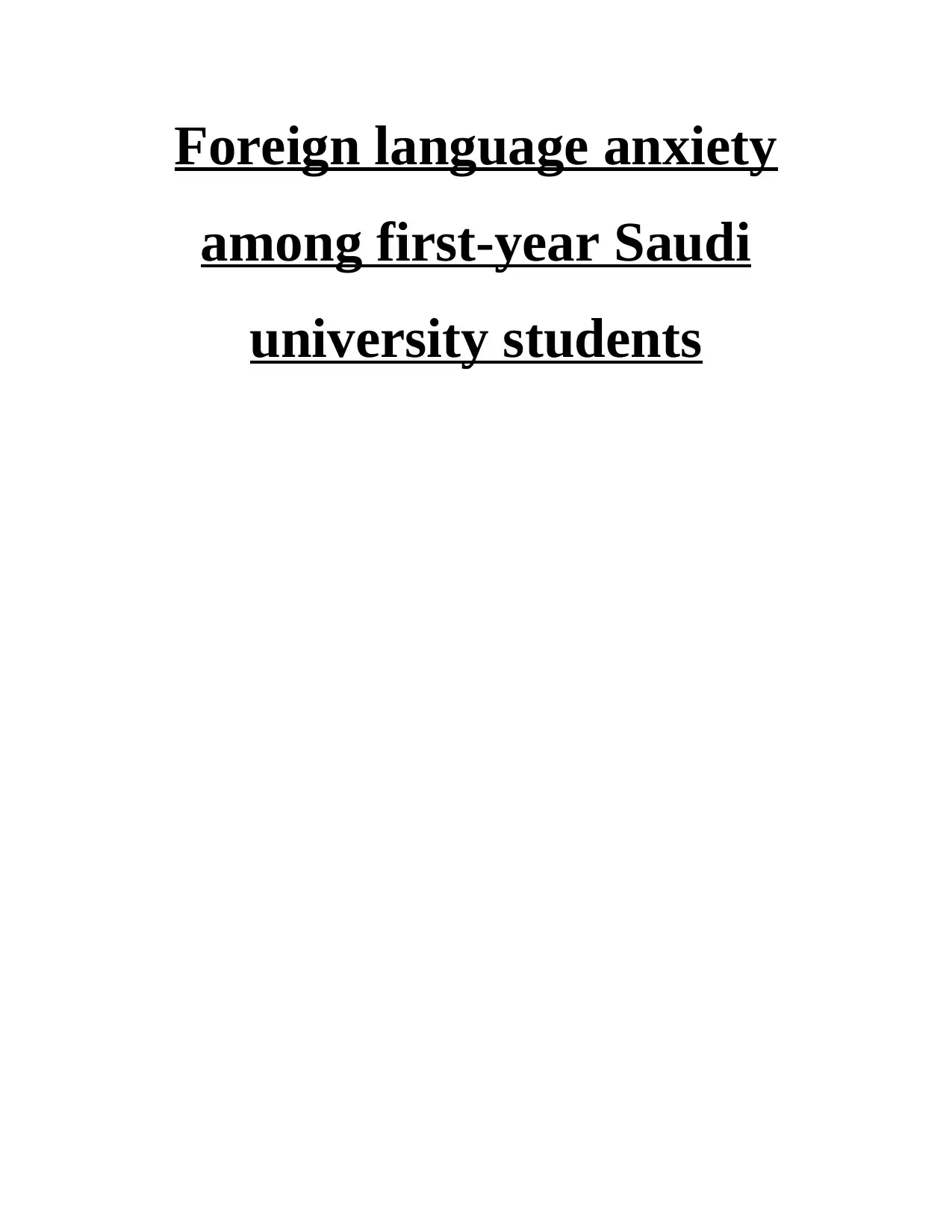
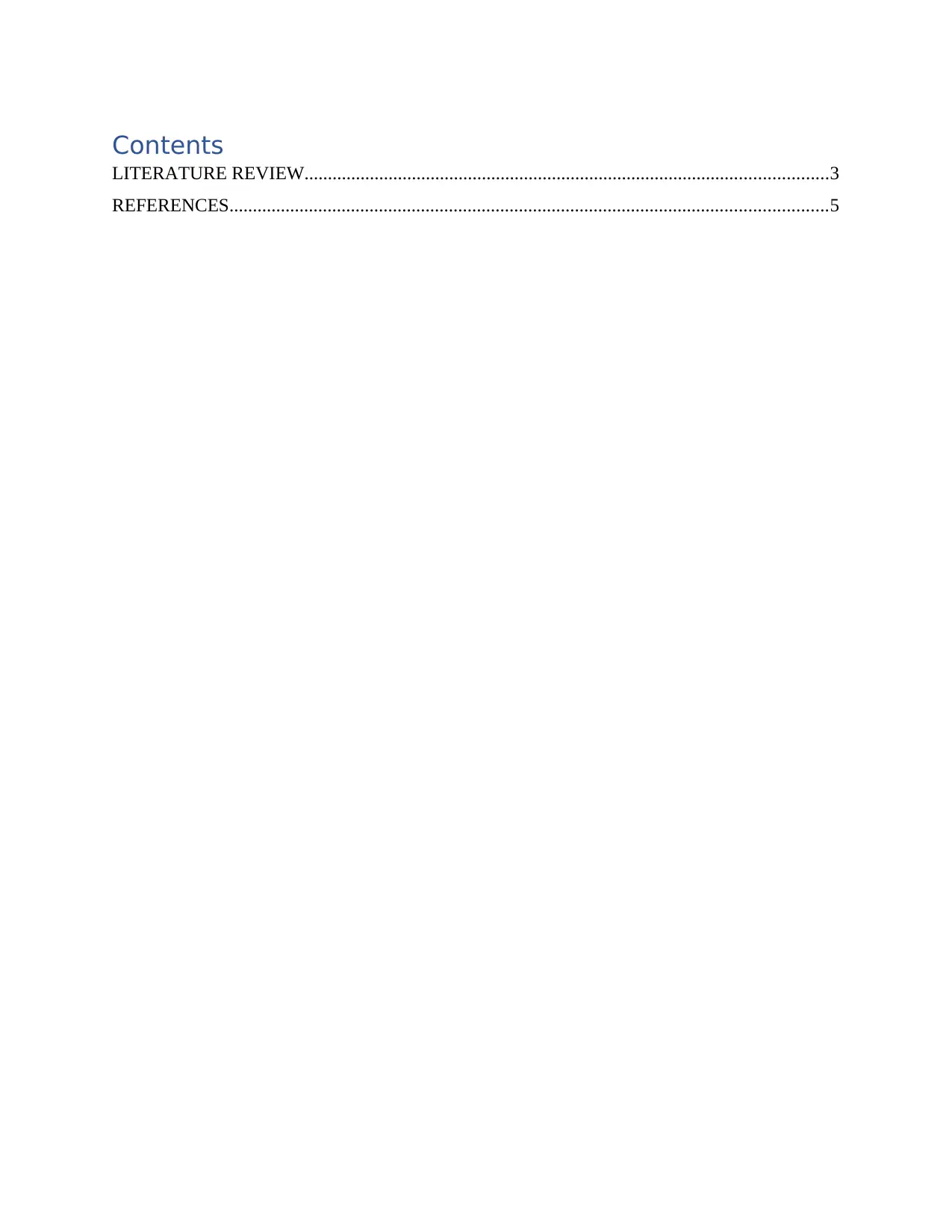
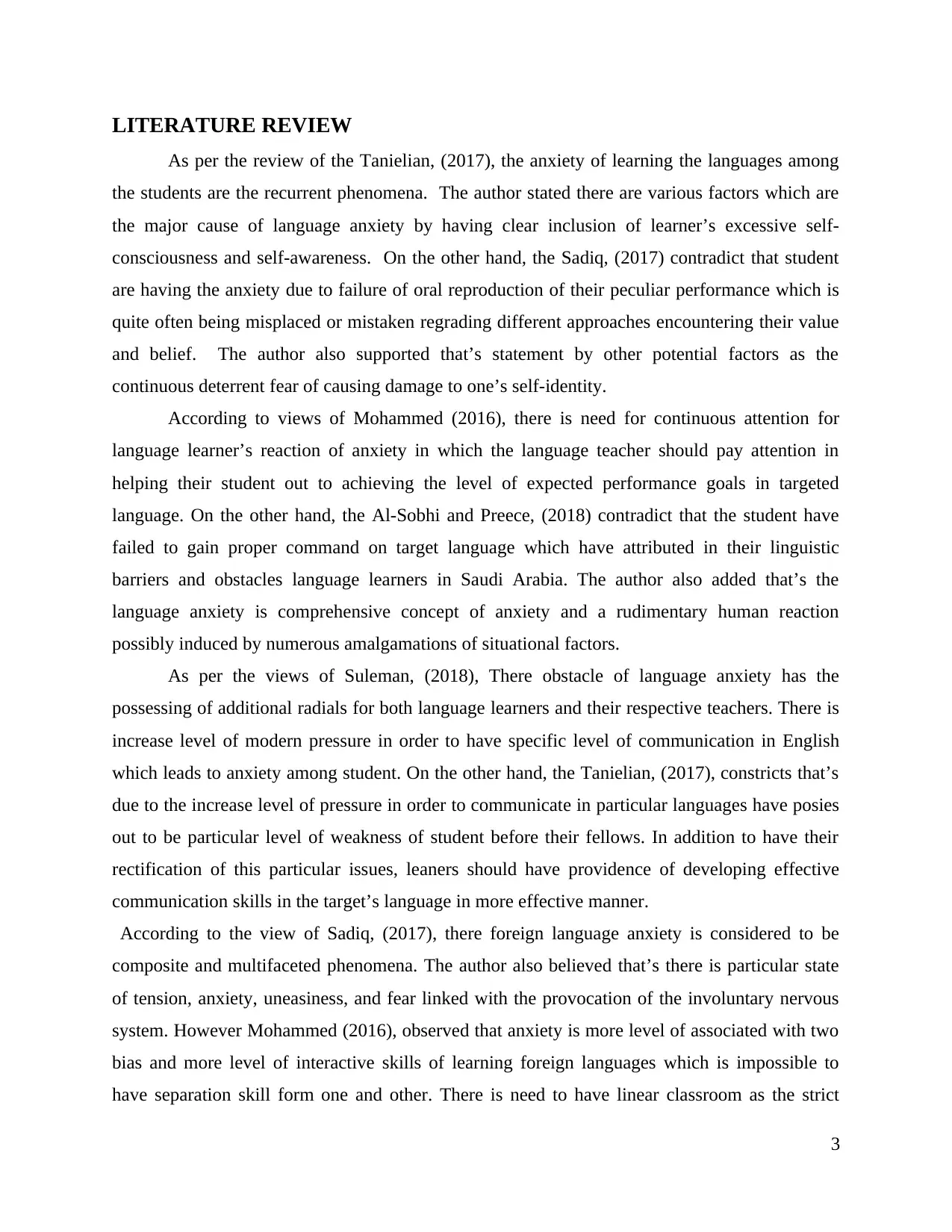

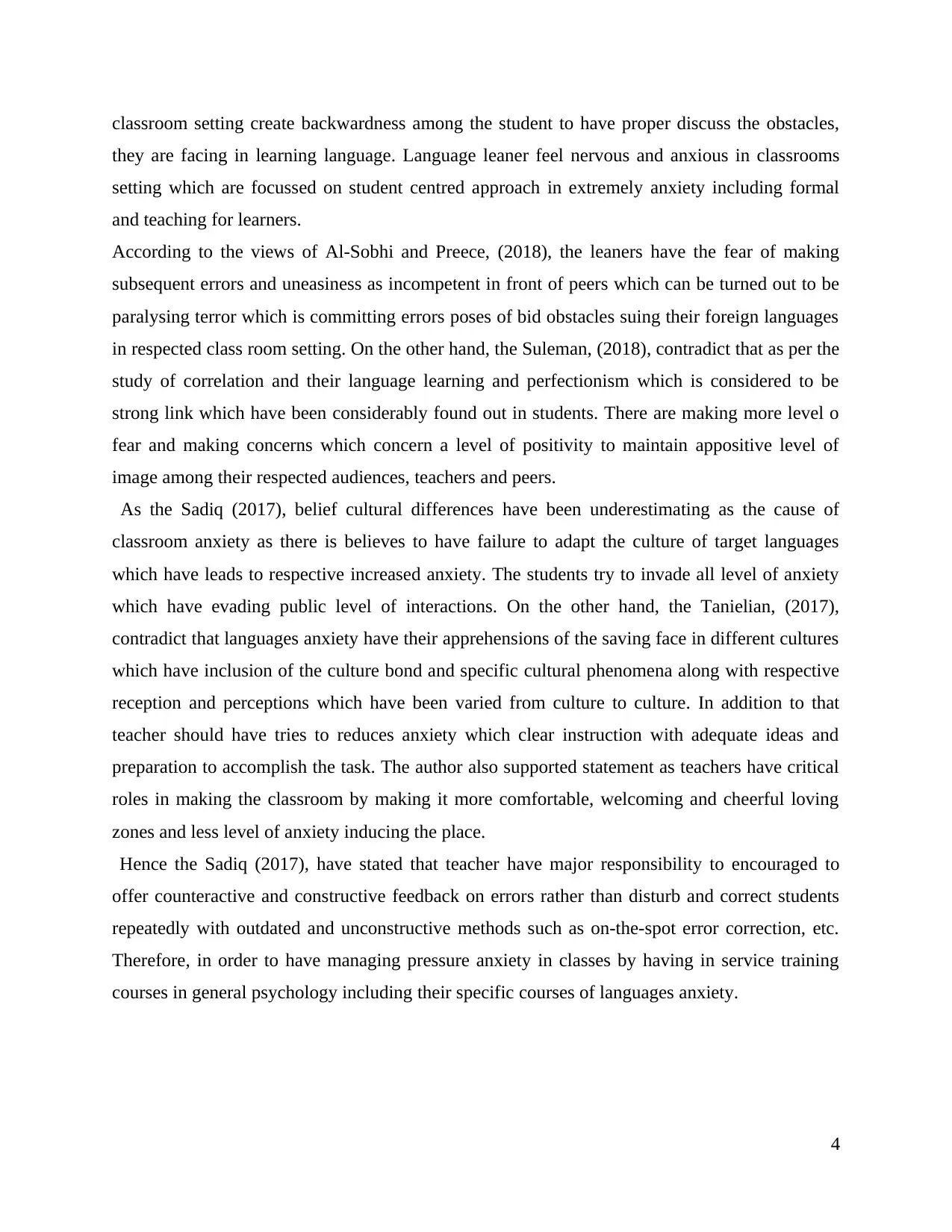
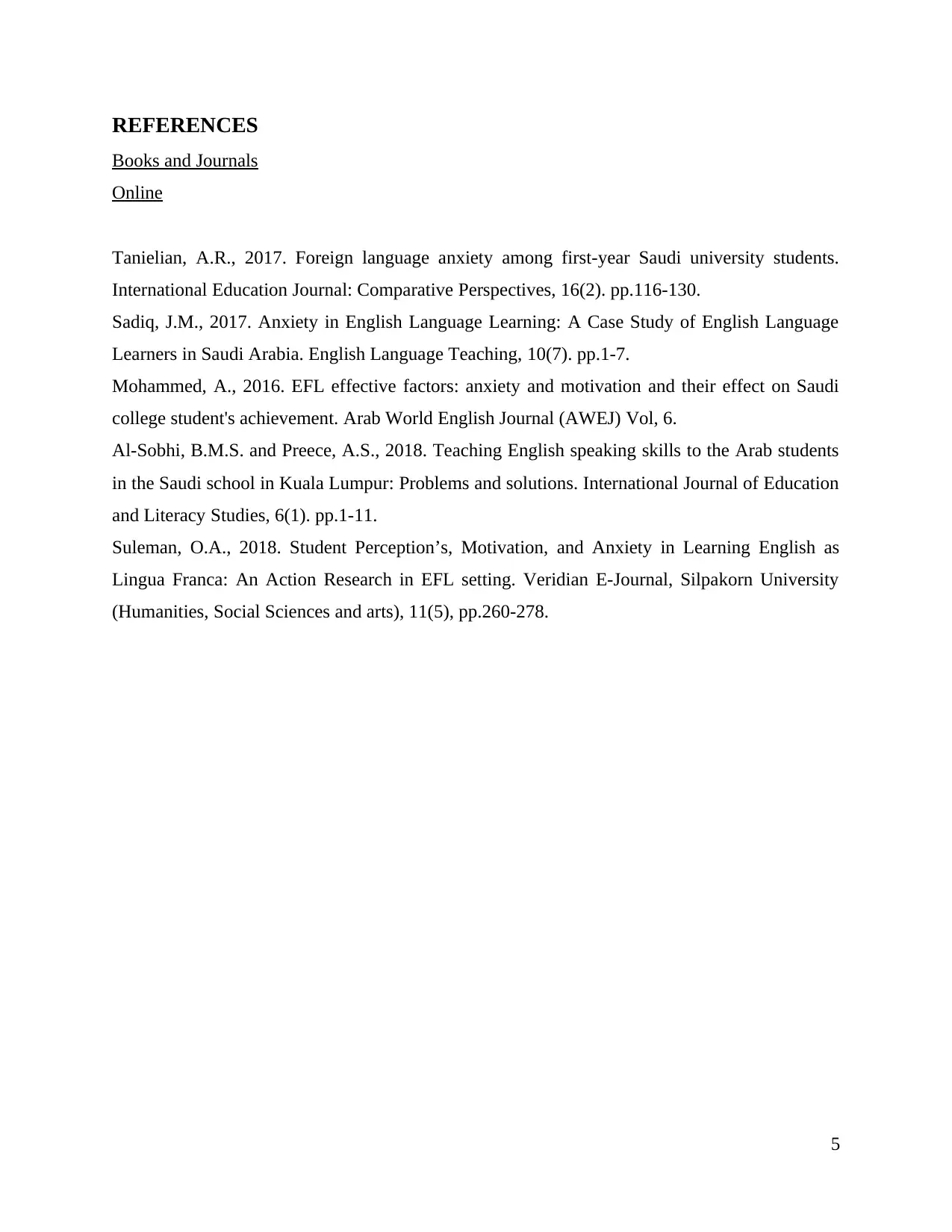


![[object Object]](/_next/static/media/star-bottom.7253800d.svg)